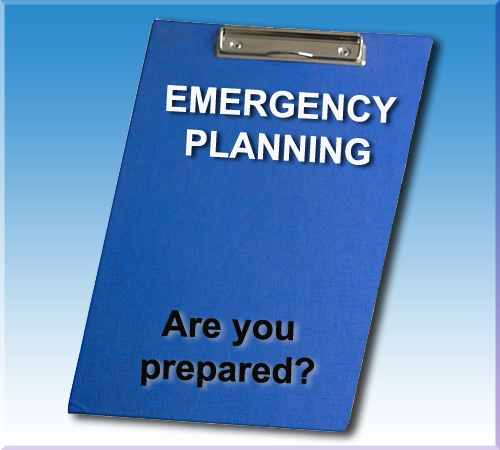Emergency Preparedness, Even if the Apocalypse Doesn’t Happen in 2012
The Mayan calendar. Solar flares burning up millions of people. A mysterious planet hidden behind the sun that will enter our solar system and destroy the atmosphere. There are plenty of theories floating around right now about the destruction of the world. Some theories have more to back them up than others but even if you don’t believe any of them you just have to look at the slew of recent natural disasters and a shaky economic environment to understand the widespread preoccupation with the future.
No one, of course, knows what is to come or what to expect in the coming years and decades. But an unknown future does not mean that our only response should be shoulder-shrugging resignation. There are some key things that can be done to prepare as fully as possible for what may at times appear to be daunting and uncertain. To help you avoid the overwhelming feeling that may come when trying to confront the unknown I want to give you two tips.
The first one is simple: relax. Don’t waste time worrying about those things you can’t control. It won’t help. It will probably just make you less happy, generally.
The second one is related to the first: do something about the things that are under your control. Be proactive and assertive.
Much of our anxiousness when imagining the possibility of a turbulent future is related to some of the most fundamental elements of our daily life—eating and drinking. Most of us (even with a bad economy) don’t spend a lot of time worrying about whether or not we’ll be able to find something to eat or drink each day. We just don’t. We might worry or complain about the quality of our food but there are relatively few for whom obtaining food and water is a legitimate daily concern. That’s a blessing and if we’re smart we can keep it that way, even in the face of an unknown future. The question is how? And the answer is simple: food storage.
Your efforts toward building a legitimate supply of food storage could literally be life saving if the future holds a disaster or catastrophe for you. Plus, it will give you peace of mind now. Working on your own food storage will take some time, money and effort but it is feasible (and really quite simple) for even the busiest and most financially challenged.
Whether you live on your own or are the head of a large household, the best place to start is with a paper and pen. You will want to calculate how much food storage you will need to sustain yourself and those dependent on you. There are plenty of resources available to help you calculate a food storage plan in detail but you may want to begin by figuring the amount of water and calories you and your dependents consume per day.
Experts say that an adult woman should drink roughly 8 cups of fluid (2.2 liters) per day and an adult man roughly 13 cups (3 liters), depending on height and weight. Calorie requirements are also dependent on height and weight but the average female should consume roughly 2200 calories daily and the average male about 2700 per day. Figuring out your daily needs is essential in order to build a 72 hour kit and then later building toward a food storage supply that will sustain you for weeks, months or eventually a year.
Water is the most fundamental element of any food storage plan and should be your first priority. After you have planned for your water needs you will want to look at building a balanced food supply. Plan to incorporate a variety of foods from all the major food groups. Grains, vegetables, fruits, dairy, meats and legumes are all part of a healthy diet and should be the primary elements of your food storage. Here are some more specific suggestions:
Grains – Flour, rice, and macaroni are easy to find in large quantities and will last for a long time.
Fruits and Vegetables – Apple sauce or a variety of sliced fruits are easy to find or prepare—and freeze dried vegetables are the same way.
Dairy – Items like powdered milk, yogurt bites, and freeze-dried cheeses.
Meats – Freeze-dried meats will last longer.
Legumes – Dried pinto beans, black beans or lentils are good options.
Most experts recommend keeping a year worth of food storage. That might seem overwhelming if you are starting from scratch so plan on building your supply gradually. If finances are tight then budget a small portion monthly to put toward your food storage. Once you have established a good supply you will want to keep the oldest foods in accessible locations so you can use them before their expiration date. As you use items from your food storage you will want to make sure to replace them. Rotating your food storage in this way will allow you to avoid waste and maintain a full store of fresh foods. And keeping up on your food storage will give you peace of mind, even in the face of an unknown future.
ABOUT THE AUTHOR:Lee Flynn is a freelance writer and expert in food storage and emergency food preparedness.

